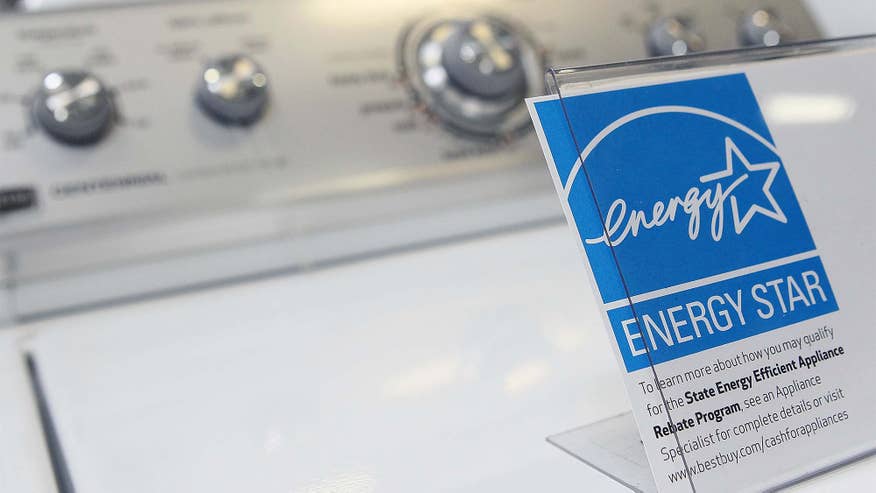One more easy, simple way for you to green our world and save money and improve, in fact, your quality of life. Imagine if every home owner reach this level of sustainability? Let's do it...what stands in your way?
What Are Green Homes? A Great Way to Save Money and the Environment

Green home appliance (2010 Getty Images)
Today's real estate buzzword is decidedly colorful: green, as in green homes. But since these types of houses aren't usually painted that verdant hue, they can be hard to pick out of a cul-de-sac. So what exactly are green homes?
If you're looking for a poetic description, "a green home is built with a much larger home in mind -- planet Earth," says Ryan Fitzgerald, owner of Raleigh Realty. A nuts-and-bolts description is a home made with environmentally friendly materials and sustainably built, with a focus on the efficient use of water and energy. And with demand for these types of houses rising (hey, there are even green Realtors), it's a perfect time to learn just what makes a home green.
The history of green homes
Historically, homes were constructed "with the traditional standard building code in mind, leaving little leftover budget to consider energy efficiency," says Nick Falkoff, owner of Auburndale Builders in Massachusetts.
As a result, energy currently used by residential buildings is largely generated in a not-so-green way -- by burning fossil fuels that now account for nearly half of global emissions.
The soaring energy prices of the 1970s jump-started the idea for eco-friendly homes. But today's concern over global warming -- along with an increasing shift to organic products and overall demand for structures that gobble up less energy -- has accelerated the green home movement. The real estate market reflects this trend, with more and more buyers seeking energy-efficient homes that will shrink their ecological footprint.
What makes a green home?
In the 1990s, the U.S. Green Building Council and the LEED building standard were created to provide a framework for certifying buildings designed sustainably. The aim is for the full life-cycle of the home -- from initial construction to the finished product -- to have a minimal impact on the environment, says John Oppermann, a real estate broker, lawyer, and founder of GreenRealEstateNYC.com. A building that implements a variety of the holistic techniques below can meet green building standards.
- Location. Green homes maximize the resources offered by a home's surroundings, without harming them, and they also take advantage of the local climate. For instance, if practicable, green homes are oriented to face the south to maximize solar heat gain.
- Materials. The physical materials used to construct a home are locally sourced, biodegradable, non-toxic, repurposed, and/or renewable.
- Energy consumption. Green homes use energy-efficient appliances and strategic insulation/ventilation methods to reduce artificial heating and cooling.
- Water usage. To conserve water, a green home uses efficient plumbing fixtures or a rainwater recapture system. The landscaping might include native plants, which require less water than their nonnative counterparts.
The less energy and resources a home uses, the greener it is. One of the biggest ways to go green is to install clean, renewable energy like solar panels or wind turbines. If that's not in the cards, there are plenty of smaller ways to be eco-friendly. Try a few of the following ideas:
- Buy appliances with Energy Star ratings, which means they consume less energy than their counterparts.
- Add an on-demand hot water heater.
- Install high-performance or triple-paned glass windows.
- Swap incandescent light bulbs for LED lights that use a fraction of the electricity.
- Unplug the biggest energy drains -- TVs, computers, printers, video game consoles, microwave ovens, and cell phone chargers -- when they're not in use. By simply switching off everything on a power strip, you can save up to two months of the average home's energy use, according to Oppermann.
- Turning up your HVAC two degrees in the summer and down two degrees in the winter can save the equivalent of 2,000 pounds of carbon dioxide emissions annually.
- Use cold water for your laundry, to save 80% on your energy consumption while washing your clothes.
- Sealing up air leaks in windows and doors to prevent energy loss will lower heating and cooling bills.

No comments:
Post a Comment